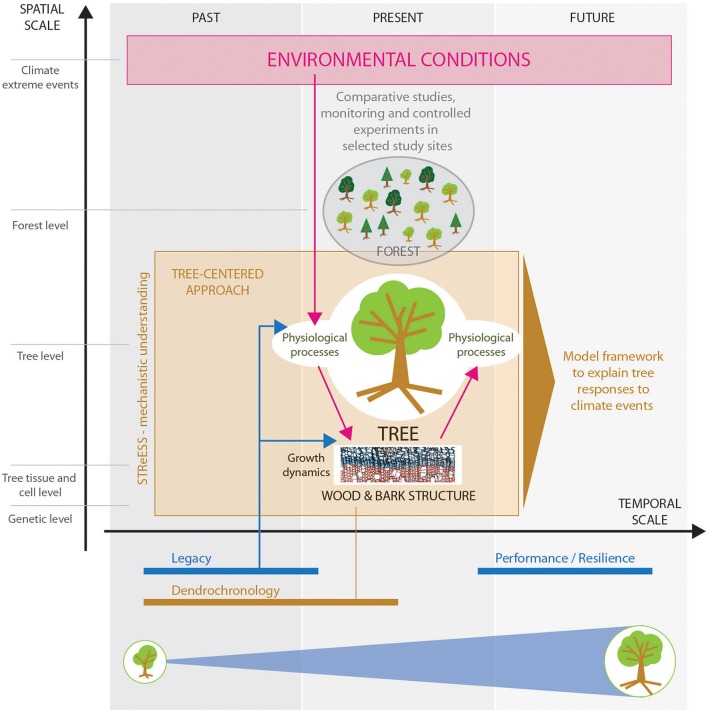Figure 1.
Schematic of the tree-centered approach applied by STReESS to enhance mechanistic understanding. The approach consists of the following interlinked elements: (1) Environmental conditions affect physiological processes, which drive growth dynamics, and results in specific wood and bark structure. (2) Quantity and structure of newly formed wood as assessed by dendrochronology affects whole-tree physiological functioning and performance. (3) Legacy of past environmental conditions and extreme events is imprinted in wood structure, influencing tree functioning, and todays' tree performance. This is important to assess tree resilience ability. (4) Selection of comparative studies, monitoring, and controlled experiments allow model testing and validation in specific contexts. All four elements are important to assess non-linear trigger-response relations and enable to create a model framework to explain and evaluate tree responses to climate events.

